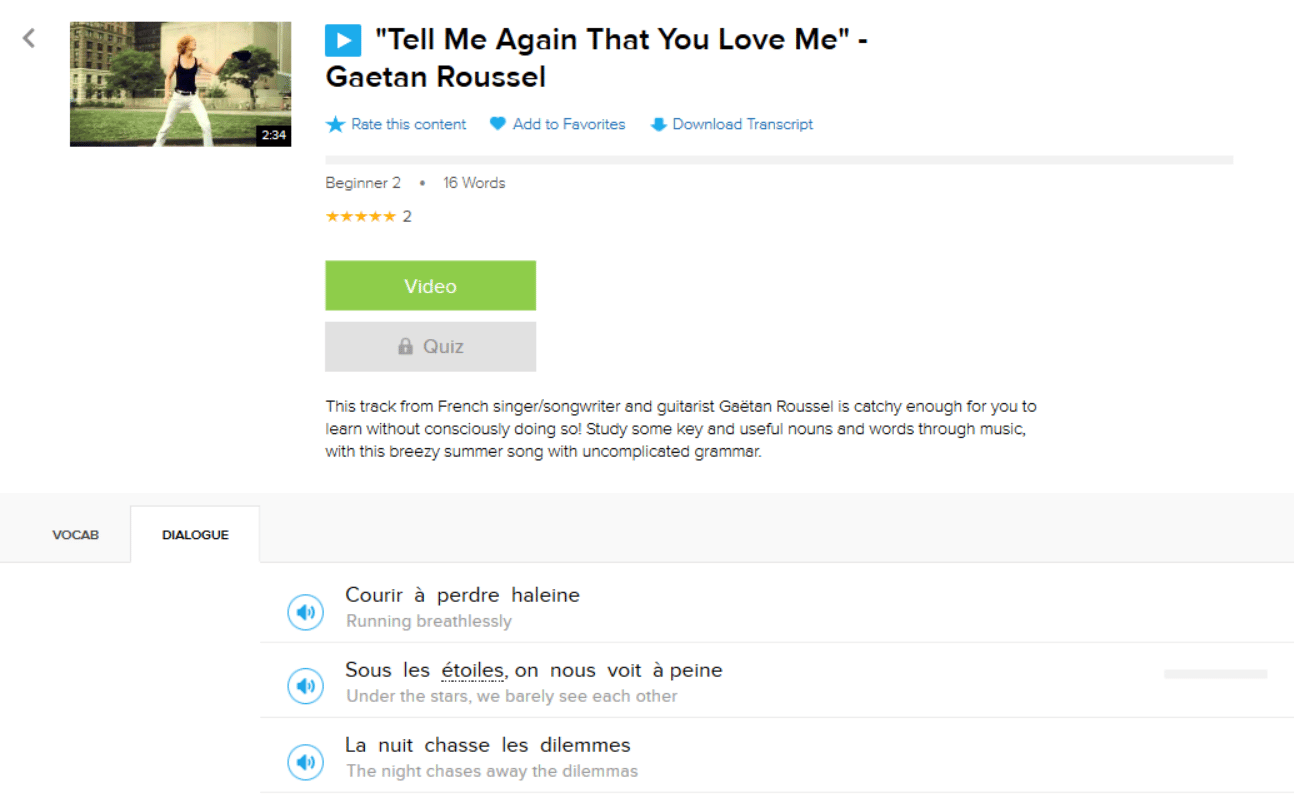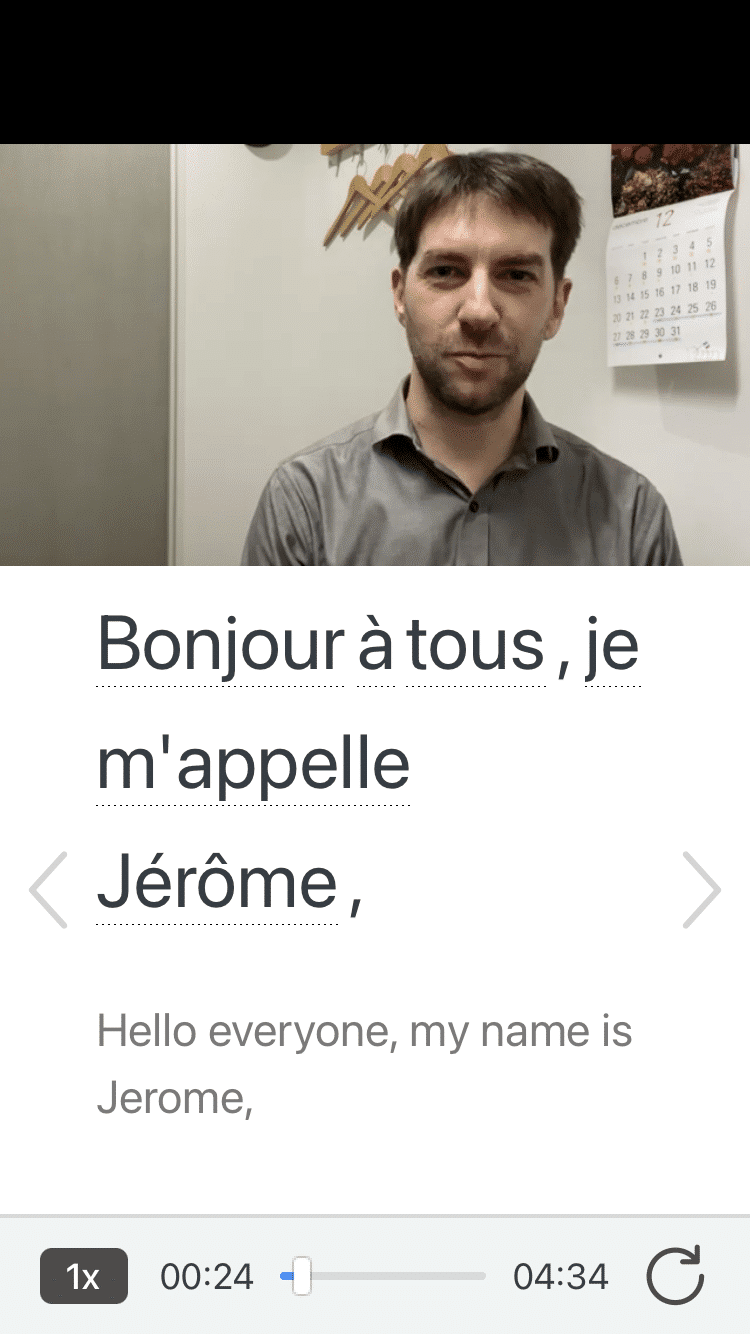French Prepositions: The Ultimate Guide (with Audio and Examples)

In English, you get on the train. In French, you get in the train. In English, you’re in bed. In French, you’re at your bed.
Prepositions in French can be really tricky because they don’t always work like in English (or other languages)–which means you have to learn them from scratch. Read on to learn about important French prepositions for time, place and movement.
Download: This blog post is available as a convenient and portable PDF that you can take anywhere. Click here to get a copy. (Download)
What are Prepositions?
Just from the word “preposition,” you can already guess that it’s a word that comes before something; it’s pre-posed.
In reality, a preposition is a word that gives you an indication of one of three things: place, time or movement.
Let’s look at each of these:
French Prepositions of Place
French prepositions of place are the easiest to tackle because they’re the easiest to imagine.
They allow you to physically situate a person, place or thing in space. The French prepositions of place are:
| French Preposition | English |
| sur | on |
| sous | under |
| entre | between |
| dans | in |
| devant | in front of |
| derrière | behind |
| chez | at the place of |
| à | at |
Sur
Sur translated to “on.”
Examples:
Le chat est sur la chaise. (The cat is on the chair.)
Colloquially, sur can also be used to say “in” when referring to certain cities:
Je suis sur Paris. (I’m in Paris.)
This is technically grammatically incorrect, though, and should only be used when speaking in a familier register; it should not be written or used in standard French.
Sous
Sous means “under.”
Examples:
Les taupes habitent sous la terre. (Moles live underground.)
Sous is used in a lot of compound nouns in French, including several words where the English equivalent uses the Latin root “sub.” For example:
Devant
Devant can be translated as, “before” or “ahead of.”
Examples:
Vas-y; passe devant. (Go ahead, go before me.)
Je suis devant le cinéma. Où es-tu? (I’m in front of the movie theater. Where are you?)
Devant is not used in reference to time, as the English “before” can be. (In French, the word for that is avant .)
Derrière
Derrière means “behind.”
Examples:
Attention! Je suis juste derrière toi. (Careful! I’m right behind you.)
Careful how you use it! In noun form, derrière also means “behind” in the anatomical sense of the word.
Avec
Avec is translated to “with.”
Examples:
Qu’est-ce que tu veux manger avec tes frites: du ketchup ou de la mayo? (What do you want to eat with your fries: ketchup or mayo?)
Avec qui est-il venu à la soirée, Simon? (Who did Simon come to the party with?)
Au fond de
Au fond de means “at the extremity of.”
While this is technically a compound preposition, it can be tough to get a handle on so it’s good to start recognizing it now.
Examples:
J’ai trouvé un trésor au fond du lac. (I found treasure at the bottom of the lake.)
Les toilettes sont au fond du restaurant. (The bathroom is at the back of the restaurant.)
Most of the above terms closely resemble their counterparts in English in terms of usage. There are a few exceptions, though:
Dans
Dans is used in French for any form of transportation, including trains, buses, trams and trolleys.
For example, in English, you’ll say, “I’m on the bus.” But in French, you’ll say, Je suis dans le bus.
Au, a la, a l’, and aux
Au, a la, a l’, and aux are all permutations of the same preposition, à, so we’ve grouped them. This video from the FluentU French YouTube channel might also be helpful in terms of distinguishing between these prepositions:
Á
When talking about being in a city, à is often used:
à Paris (In Paris)
For most other places, you’d use its permutations.
Au
Au is used with singular, masculine nouns:
Marie est au parc. (Marie is at the park.)
This includes masculine countries:
Au Canada (In Canada)
Au Mexique (In Mexico)
A la
A la is used with singular, feminine nouns:
à la boutique (at the shop)
Countries don’t use this preposition, but most cities do:
à la Nouvelle-Orléans (In New Orleans)
A l’
A l’ is used with singular nouns (masculine or feminine) that begin with a vowel:
Je vais à l’école. (I’m going to school.)
Aux
Aux is used with plural nouns (masculine or feminine):
aux iles (to the islands)
Chez
Chez just plain doesn’t exist in English, but it’s a very useful preposition.
Chez can often be translated as “at ___’s house.” For example, if you’re going to Marie’s house, you’d say, Je vais chez Marie.
The only issue with this translation is that chez doesn’t always mean someone’s house; it can also mean someone’s work. If you are going to the doctor’s office, you don’t go au bureau du médecin, but rather chez le médecin .
Here are some more examples:
Je vais chez le coiffeur.
(I’m going to the hairdresser’s.)
Je vais chez le dentiste.
(I’m going to the dentist’s.)
It’s no wonder that you often find restaurants with chez in the title; if a restaurant is called chez Pierre , it means “Pierre’s place”!
French Prepositions of Time
French prepositions of time, as their name suggests, help you situate people, places, things and events in time. The French prepositions of time are:
| French Preposition | English |
| avant | before |
| après | after |
| vers | around |
| depuis | since |
| pendant | for |
| pour | for |
For the most part, many of these prepositions act the way they do in English… of course, with a few exceptions:
Depuis
Depuis is used like “since” when speaking about things that have occurred since a specific date:
Elle habite à Paris depuis 2006.
(She has lived in Paris since 2006.)
However, it is also used with certain durations.
Take a look at these examples:
Elle habite à Paris depuis 2 ans.
Elle revient à Paris pour 2 ans.
Elle a habité à Paris pendant 2 ans.
The first example means that she has lived in Paris for the past two years. She moved to Paris two years ago. We do not know if or when she will leave Paris.
The second example means that she plans to be returning to Paris for two years. She has an established plan to be in Paris for two years, at which point, she will be leaving Paris.
The last example means that at some point in the past, she lived in Paris for two years, but she no longer lives in Paris.
Pour vs. pendant
This also shows you, to a certain extent, the difference between pour and pendant. Pour refers to an established duration of time in the future or in the present and future. Pendant refers to a duration of time at any time.
Pour can also be used to establish a deadline. For example:
Il faut terminer le projet pour le 15.
(The project must be finished by/for the 15th.)
French Prepositions of Movement
Prepositions are also used to describe movement. While these prepositions are often related to prepositions of space, they are not always the same.
Here are the French prepositions of movement:
| French Preposition | English |
| vers | towards |
| à | to |
| de | from |
| par | by, by way of |
The only tough point here is that à and de are modified based on the object of the preposition, or the noun that follows:
Á
With à, the form is modified in the following manner depending on whether the object of the preposition is feminine, masculine or plural, or if it begins with a vowel:
| French | English |
| Je vais à l'école. | I'm going to school. |
| Je vais au supermarché. | I'm going to the supermarket. |
| Je vais aux Seychelles. | I'm going to the Seychelles. |
| Je vais à la bibliothèque. | I'm going to the library. |
De
In much the same way, de is modified depending on whether the object of the preposition is feminine, masculine or plural, or if it begins with a vowel:
| French | English |
| Je reviens de l'école. | I just got back from school. |
| Je reviens du supermarché. | I just got back from the supermarket. |
| Je reviens des Seychelles. | I just got back from the Seychelles. |
| Je reviens de la bibliothèque. | I just got back from the library. |
Once you’ve mastered basic French prepositions, it will be much easier to address compound prepositions—but that’s another story for another time!
Until then, keep using your basic prepositions, and practice them every chance you get.
Download: This blog post is available as a convenient and portable PDF that you can take anywhere. Click here to get a copy. (Download)
And one more thing...
If you like learning French on your own time and from the comfort of your smart device, then I'd be remiss to not tell you about FluentU.
FluentU has a wide variety of great content, like interviews, documentary excerpts and web series, as you can see here:

FluentU brings native French videos with reach. With interactive captions, you can tap on any word to see an image, definition and useful examples.

For example, if you tap on the word "crois," you'll see this:

Practice and reinforce all the vocabulary you've learned in a given video with learn mode. Swipe left or right to see more examples for the word you’re learning, and play the mini-games found in our dynamic flashcards, like "fill in the blank."

All throughout, FluentU tracks the vocabulary that you’re learning and uses this information to give you a totally personalized experience. It gives you extra practice with difficult words—and reminds you when it’s time to review what you’ve learned.
Start using the FluentU website on your computer or tablet or, better yet, download the FluentU app from the iTunes or Google Play store. Click here to take advantage of our current sale! (Expires at the end of this month.)







